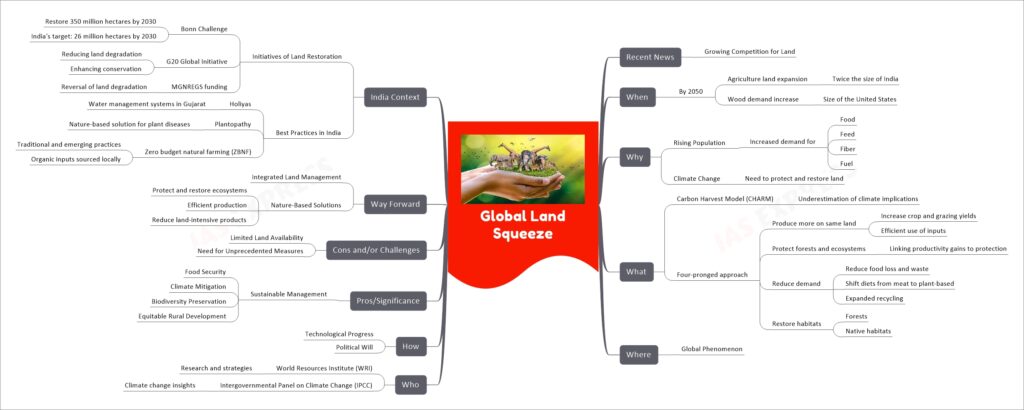Global Land Squeeze

The Global Land Squeeze refers to the increasing competition for land due to the rising demand for food, wood, and shelter, alongside the need to store carbon and protect biodiversity. With a growing global population, an area twice the size of India is projected to be converted to agriculture by 2050, and an area as large as the United States will be needed to meet wood demand. World Resources Institute’s report suggests a four-pronged strategy: produce more on the same land, protect forests, reduce demand for land-intensive products, and restore native habitats. In the Indian context, initiatives like the Bonn Challenge, the G20 Global Initiative, and practices like Holiyas, Plantopathy, and Zero budget natural farming are notable efforts towards addressing this challenge. The Global Land Squeeze underscores the need for sustainable land management, balancing human needs with ecological preservation.

